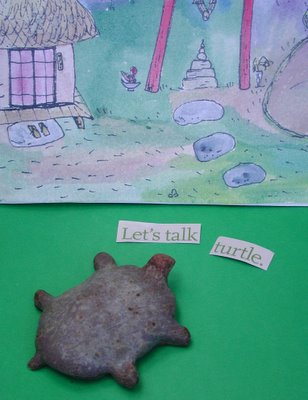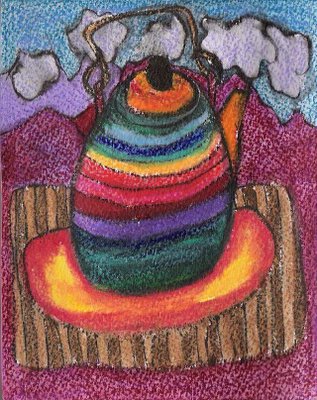My Tucson friend, Bonnie, used to send poems to her friends and family on Valentine's Day to celebrate the many kinds of Love. I've posted a few from her selection. My friend Shirley added the Mary Oliver poem.
* * * * *
LOVE AMONG FRIENDS
From
The Essential Rumi translated by Coleman Barks
Two friends meet every morning
on the riverbank.
They sit in the nook of the earth and talk.
Each morning,
the second they see each other,
they open easily,
telling stories and dreams,
Empty of any fears or suspicious holding back.
One starts laughing out a story
He hasn't thought of in five years,
And the telling might take five years!
There is no blocking the speech-flow
River-running-all-carrying momentum
that true friendship is.
Bitterness doesnπt have a chance
with those two.
* * * * *
THE INNER BELOVED
Lalla, from
Naked Song translated by Coleman Barks
Lalla,
You've wandered so many places
trying to find your husband!
Now at last, inside the walls
of this body-house,
in the heart-shrine,
you discover where he lives
At the end of a crazy-moon night
the love of God rose.
I said, "It's me, Lalla."
The Beloved woke.
We became That,
And the lake is crystal clear.
* * * * *
LONG-TIME LOVE
The Red Kite by Saijo Yasa, translated from the Japanese by Kenneth
Rexroth
My dear, what have you done with our old red kite?
Let's fly it again this evening as high as we can,
Through the driving sleet towards the moon in the sky.
The shore is far away now where we were young together once.
The kite is torn and battered, but maybe it will still fly.
My dear, come, let's fly it wildly, as far out as we can
With all the cords of the heart through the falling sleet
Towards the moon in the sky.
* * * * *
EARTHLY PLEASURES
The Plum Trees, Mary Oliver
Such richness flowing
through the branches of summer and into
the body, carried inward on the five
rivers! Disorder and astonishment
rattle your thoughts and your heart
cries for rest but don't
succumb, there's nothing
so sensible as sensual inundation. Joy.
is a taste before
it's anything else, and the body
can lounge for hours devouring
the important moments. Listen,
the only way
to tempt happiness into your mind is by taking it
into the body first, like small
wild plums.
* * * * *
FELINE LOVE
Ode to Cats, Pablo Neruda
Oh little
emperor without a sphere of influence
conqueror without a country,
smallest living-room tiger, nuptial
sultan of the sky,
of the erotic roof-tiles,
the wind of love
in the storm
you claim
when you pass
and place
four delicate feet
on the ground,
smelling,
distrusting
all that is terrestrial,
because everything
is too unclean
for the immaculate foot of the cat.
* * * * *
LOVE OF YES
From e. e. cummings
Complete Poems 1902-1964i thank You God for most this amazing
day: for the leaping greenly spirits of trees
and a blue true dream of sky; and for everything
which is natural which is infinite which is yes
(i who have died am alive again today,
and this is the sun's birthday; this is the birth
day of life and love and wings: and of the gay
great happening illimitably earth)
how should tasting touching hearing seeing
breathing any-lifted from the no
of all nothing-human merely being
doubt unimaginable You?
(now the ears of my ears awake and
now the eyes of my eyes are opened)
* * * * *
LOVE THAT MAKES YOU DANCE
by Hafiz
I am happy even before I have a reason.
I am full of Light even before the sky
Can greet the sun or the moon.
Dear companion
We have been in love with the Divine
For so very, very long.
What can we now do but Forever Dance!
** HapPy HEART day **














